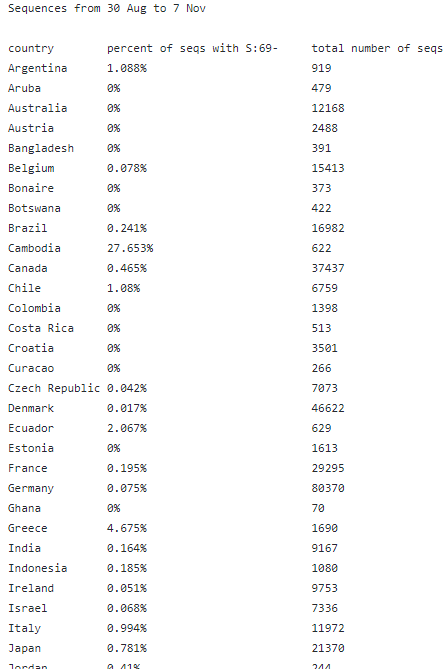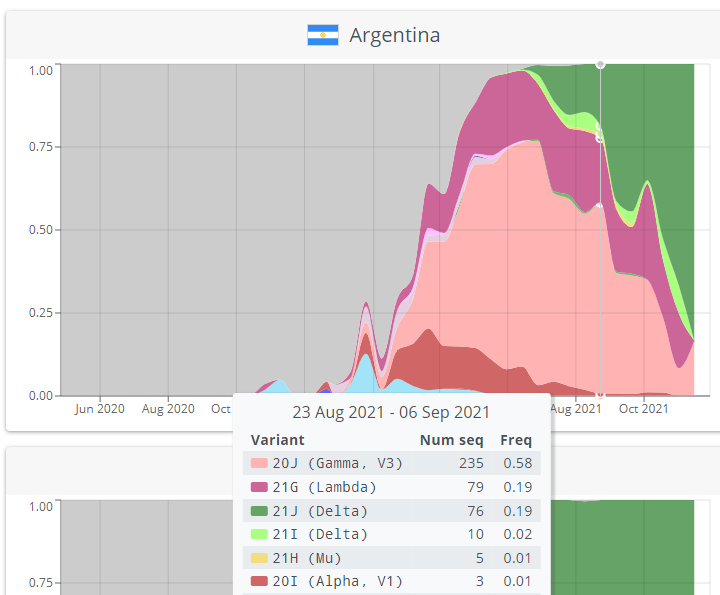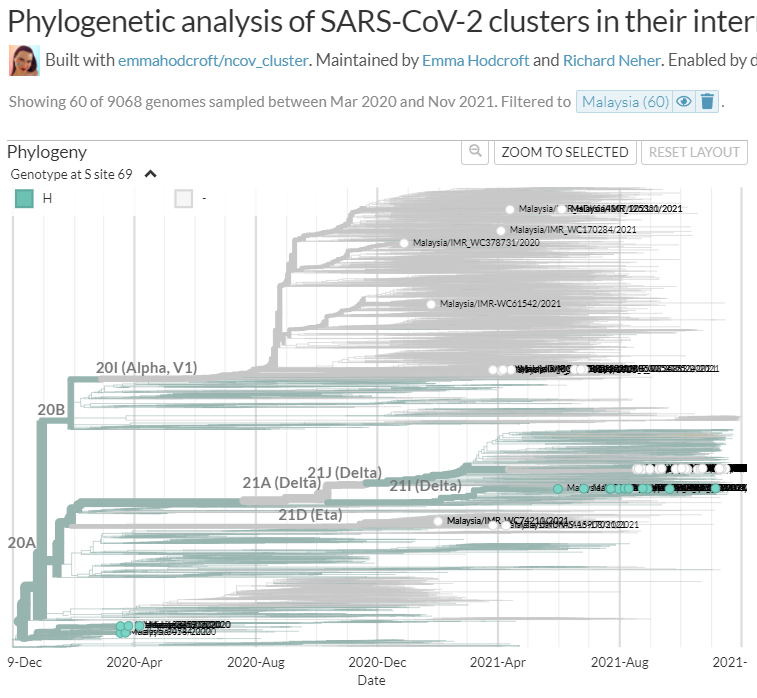
I've gotten a few Qs lately about what the odds are that a SGTF (S-gene-drop-out) is Omicron vs another variant with S:69-/70-
I track S:69- routinely for CoVariants.org, so I pulled out data from 30 Aug - 7 Nov (pre Omicron) as a baseline:
github.com/hodcroftlab/co…
1/5
I track S:69- routinely for CoVariants.org, so I pulled out data from 30 Aug - 7 Nov (pre Omicron) as a baseline:
github.com/hodcroftlab/co…
1/5

This only includes countries CoVariants tracks - so at least 500 seqs in any variant or mutation.
As @CorneliusRoemer illustrated a few days ago, knowing this can help you get an idea of whether an SGTF is Omicron or /nOmicron/ 😛(seq to confirm!)
2/5
As @CorneliusRoemer illustrated a few days ago, knowing this can help you get an idea of whether an SGTF is Omicron or /nOmicron/ 😛(seq to confirm!)
2/5
https://twitter.com/CorneliusRoemer/status/1465852275990142981?s=20
VERY Importantly: This is going to change quickly now -- for a lot of countries the odds that they're detecting Omicron are rising markedly.
But particularly if looking back at SGTF data from the last few weeks, knowing your 'baseline' can be helpful.
3/5
But particularly if looking back at SGTF data from the last few weeks, knowing your 'baseline' can be helpful.
3/5
There's some variation in the numbers we see here.
First - this is an aid, not the Absolute Truth. I just made it to help.
But knowing the SGTF pre-Omicron-era was different in 1 country vs another can still be helpful - see Greece & France below:
3/N
First - this is an aid, not the Absolute Truth. I just made it to help.
But knowing the SGTF pre-Omicron-era was different in 1 country vs another can still be helpful - see Greece & France below:
3/N

I checked on a few of these & can speak a little to why some are higher than others.
Argentina (1.1%), Ecuador (2.1%), Cambodia (27.7%), & Thailand (1.4%) still had Alpha circulating until recently - which also has S:69-/70-.
4/5


Argentina (1.1%), Ecuador (2.1%), Cambodia (27.7%), & Thailand (1.4%) still had Alpha circulating until recently - which also has S:69-/70-.
4/5



Other countries like Greece (4.5%), Malaysia (6.0%), Peru (1.8%), Slovakia (1.8%) seem to have some Delta lineages circulating that have acquired S:69-/70-.
5/5
nextstrain.org/groups/neherla…
nextstrain.org/groups/neherla…
nextstrain.org/groups/neherla…


5/5
nextstrain.org/groups/neherla…
nextstrain.org/groups/neherla…
nextstrain.org/groups/neherla…



• • •
Missing some Tweet in this thread? You can try to
force a refresh











